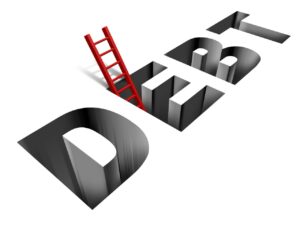As prices skyrocketed and the Bank of Canada set higher interest rates, many Canadians accumulated more and more debt. Many credit card balances make even the minimum payments hard to manage. As a result, many consumers are wondering if consolidating debt is a good idea. Yet, with rising interest rates, consolidation loans are not always the best debt relief plan.
What is a consolidation loan, and how do they work?
The idea behind a debt consolidation loan is straightforward enough. The consumer receives a new personal loan and uses the funds to pay off high-interest-rate debts. With only one monthly payment and a lower interest rate, the more favourable loan terms save money, and the debt is paid off sooner.
Types of Consolidation loans
Canadian consumers have several choices for how to consolidate debt. Every family’s financial situation is unique, so it is important to consider which approach is best.
Credit card balance transfers
At various times of the year, credit card companies promote zero percent or low-interest balance transfers. A balance transfer lets you use one credit card account to pay the balance owing (in full or in part) on another credit card.
The bank or credit union invites you to consolidate your credit card debt onto one card by taking a cash advance to pay the other cards.
Cautions on Credit Card Balance Transfers:
- The promotional interest rate lasts for a set time. Then, the interest rate goes up, which increases your payment.
- It all starts with a balance transfer fee. This fee is a small percentage of the transfer, usually around 3 to 4%. For smaller transfers, the fee may be fixed.
- There is no grace period if you make purchases on the same credit card.
- Make payments on time. If you are over 60 days late, the interest rate may increase on the entire balance.
Debt consolidation loan
Debt consolidation loans convert debts into a single loan payment with a lower interest rate. Low interest rates may only last for a short time. After that, lenders often increase the interest rate. As monthly payments reduce, the number of payments increases. So, the overall amount may be more.
Home equity loan
A home equity loan uses the difference between the property’s market value and current mortgages. These loans offer low interest rates secured by real estate as compared to unsecured debt. It’s important to note that not paying back the loan means the borrower could lose their home to foreclosure. over and above losing their home, borrowers may incur hundreds or even thousands of dollars in closing costs.
Reasons they aren’t always the best option
While a debt consolidation loan may look like an easy way to pay debt, there are dangers.
Can be more expensive
Teaser rates that expire, fees, and closing costs can all add up. If you’re not careful a consolidation could turn out to be more expensive than the original debt.
Can take longer to pay back
More, lower payments mean extending the term of the loan.
Not as much flexibility
Negotiations with one creditor may provide few options. Negotiations with multiple original creditors may offer more alternatives.
Temptation to take on more debt
A consolidation loan may pay off credit cards, leaving room to make more purchases or payday loans.
Current interest rates and loan types
Debts with low-interest rates, like student loans, are not usually worth consolidating. High-interest debt, like credit cards, makes more sense to consolidate.
Resolving the cause of the debt
Making more room on credit cards for an emotional or impulse shopper creates the potential for more problems and bigger debts.
Debt consolidation is not the same as debt relief. Managing a repayment method changes the details, but the core of the debt remains unchanged.
How to know consolidation is the best option for you to be debt-free
Every financial situation is unique, so the best options depend on your circumstances.
These are some scenarios where Canadian consumers find debt consolidation is a good choice:
- Bad credit makes it hard to secure a lower interest rate. Good credit is helpful.
- A preference for a fixed, monthly payment
- Ability to repay the loan
The 60 rule
A quick way to decide about the best type of consolidation is the Rule of 60. Simply add up all your non-mortgage debts and then divide by 60.
For example, $15,000 / 60 = $250
Is there cash flow to cover a $250 monthly payment over the next 5 years?
Be sure to look at the loan terms for the number of payments.
Best practices for making a consolidation loan work
- Understand the total costs: Lower payments over a longer term, plus any fees, may cost more than the original debt.
- Only include high-interest debt: High-interest credit cards don’t consolidate with low-interest student loans.
- Consider renegotiating terms: Contact creditors directly to avoid consolidation fees.
- Know the options: Find your best consolidation method by exploring all the consolidation options credit card balance transfer, consolidation loan, and home equity line of credit.
- Avoid creating new debt: Paid-off credit cards are not a license to go shopping.
How to get a consolidation loan
Qualifying for a debt consolidation loan is like applying for any other personal loan.
- Check your credit score and credit utilization
- Gather loan application documents
- Confirm the amount required with a debt statement from current lenders
- Shop for rates
- Submit an application
- Receive the loan funds. Most lenders disburse the funds directly to creditors
Other debt management alternatives
File a Consumer Proposal
A consumer proposal is a legal agreement with creditors to schedule the repayment of debts over time. The proposal does not consolidate the debts into one loan. Instead, it consolidates debt payments. The debts remain with the creditors. The monthly payment goes to a licensed insolvency trustee and is disbursed among the creditors.
Debt Management Program (DMP)
A debt management program (DMP) doesn’t consolidate debts but consolidates debt payments like a consumer proposal. Non-profit debt counselling agencies negotiate with creditors. Their goal is to save you time and money by combining payments and reducing or even waiving interest. To learn more about this option consider talking with a credit counsellor.
Conclusion
A consolidation loan is not debt relief. It shuffles debt around. The hope is that the shuffling makes repayment more manageable.
Need more advice about which debt relief option is best for you? Contact us today.




